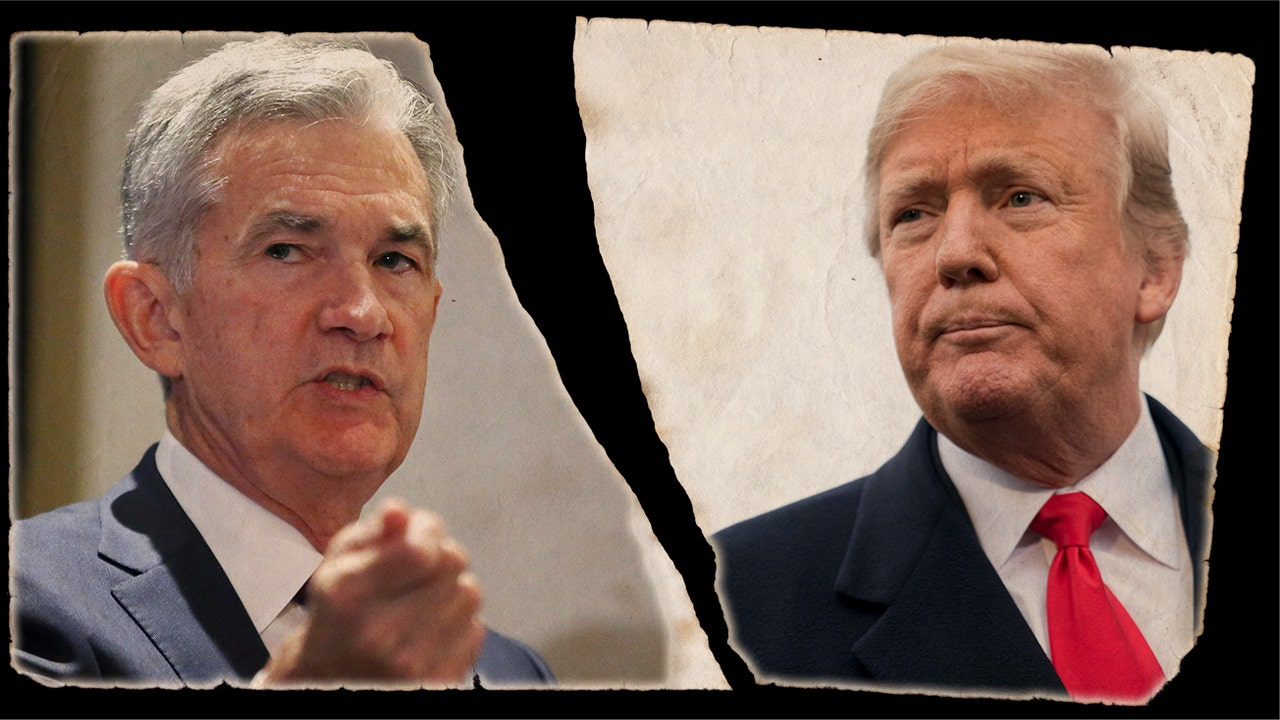Personal preferences play a crucial role in shaping our identities and choices. These inclinations influence everything from our favorite music genres to the brands we trust. Behavioral scientists emphasize the significance of understanding the influence of preferences, as they are often intertwined with social norms and choices. Moreover, consumer behavior reveals that our buying habits can reflect deeper attitudes and preferences developed over time. Exploring the dynamics of personal preferences not only sheds light on our decisions but also highlights the fascinating ways in which our selections can evolve in response to external influences.
When considering what drives our individual choices, one cannot overlook the myriad factors that contribute to our tastes and inclinations. Often described as inclinations or predilections, these factors encompass the complex interplay between our experiences and the societal expectations we encounter. Individual preferences can be swayed by social norms or norms of behavior, creating a tapestry of influences that shape consumer decisions and market trends. Delving into this topic reveals how attitudes can impact choices and vice versa, painting a nuanced picture of our purchasing patterns and desires. Ultimately, understanding these aspects allows us to appreciate the deeper reasons behind our preferences and behaviors.
The Role of Social Norms in Shaping Preferences
Social norms play a substantial role in influencing our preferences and choices. As we grow up, we are constantly exposed to the opinions, habits, and brands that surround us—often from family and friends. This social context can quietly guide our decisions, making certain brands or products more appealing simply because they are familiar or endorsed by those we admire. For instance, many people find themselves gravitating towards the same preferred consumer brands as their parents, as these early influences set an expectation and appreciation for specific products that often lasts into adulthood.
Moreover, social norms dictate not just what we like but how we express our liking. For example, in certain communities, there may be a strong preference for particular types of clothing styles, which at first glance may seem random. However, underlying these choices are shared cultural values and desires for acceptance—or rebellion—against mainstream trends. Therefore, it is crucial to recognize that our consumer behavior is often less about personal preference and more about the social constructs surrounding us.
How Personal Preferences Are Influenced by Consumer Behavior
Personal preferences, as we would like to believe, are deeply rooted in individual taste and identity. However, consumer behavior studies reveal a different story; our choices are often swayed by external factors like advertising, peer influence, and market trends. For instance, when individuals see trending items in their social media feeds, they may feel an urge to conform to these popular choices, altering their original preferences in the process. This behavior highlights a paradox: while we cherish the idea of unique personal tastes, many of our likes are actually shaped by the environment we navigate.
Additionally, buying habits inform our personal preferences in ways we might not fully recognize. Once someone develops a habit of purchasing a specific brand or product, they often find it difficult to deviate from that choice due to cognitive dissonance or brand loyalty. Over time, this can lead to a reinforcing cycle where the choice solidifies one’s identity, making alternative options less appealing despite possibly being better or more suited to one’s lifestyle preferences.
The Impact of Advertising on Our Attitudes and Preferences
Advertising has a potent influence on consumer attitudes and preferences. Companies leverage psychological strategies to create advertisements that resonate with emotional triggers, subtly convincing consumers that they need a product to be happier or more fulfilled. This influence is particularly strong in a digital world where personalized ads are tailored to align with one’s online behavior and presented with a sense of urgency or exclusivity. As such, the products we choose often reflect the company’s ability to shape our perceptions and desires through skillful marketing campaigns.
Interestingly, despite the sophistication displayed in advertising, the effectiveness often lies in its simplicity and relatability. People gravitate towards brands that echo their values or aspirations, creating a perceived affinity that may not exist organically. For instance, if a particular beverage is marketed as the drink of choice among a well-liked celebrity, it may automatically become more desirable to consumers simply because of its association with that persona. Thus, the preferences of the masses can rapidly be redirected, often leading to collective buying behavior that may not align with genuine personal preferences.
The Influence of Technology on Consumer Choices
In today’s high-tech landscape, technology serves as a double-edged sword when it comes to consumer choices. On one hand, it enables unprecedented access to a multitude of products, catering to an array of tastes and preferences. On the other hand, it can bombard consumers with irrelevant ads that cause confusion rather than enhance decision-making. For example, algorithms designed to track user behavior may lead consumers down paths of suggested products that mimic past purchases rather than introducing them to genuinely novel alternatives that might better suit their interests.
Moreover, while technological advancements like AI and data analytics refine how brands connect with users, they can also create echo chambers. If someone frequently interacts with content that aligns with their existing preferences, they may never stretch beyond those boundaries. This curiosity-stifling phenomenon can lead to a narrow set of buying habits, ultimately stifling the exploration of new brands or products that could fulfill unrecognized needs. As such, technology, with all its promises, can sometimes reinforce a limited spectrum of choices.
Consumer Behavior and Identity Formation
The intersection of consumer behavior and identity formation is a fascinating area of study. Individuals often curate their shopping behaviors as a reflection of their self-image and the personas they wish to project to the world. For instance, someone might favor eco-friendly products not merely for their functionality but as part of a broader lifestyle choice associated with sustainability and social consciousness. Here, consumer choices become more than just transactions; they are emblematic of who we are and how we want to be perceived by others.
This alignment between consumer behavior and identity highlights how deep-seated preferences can sometimes be performance rather than authenticity. When people gravitate toward specific brands, they might be doing so not solely based on product quality or personal taste but as a means of fitting in or standing out within certain social circles. Ultimately, such behaviors suggest that our buying habits can often serve as a form of social signaling, where what you choose to consume speaks volumes about your identity, often shaped higher by collective influences than by individual preference alone.
Exploring Attitudes Toward Traditionally Preferred Brands
Attitudes toward traditionally preferred brands can provide insight into consumer behavior and preference dynamics. Many consumers tend to remain loyal to established brands due to familiarity and history, which fosters a sense of security in their choices. This loyalty can manifest itself in repeat purchases despite the availability of new competitors or options that may serve better needs or desires. The strong hold of these brands often leads to emotional justifications for continuing to support them, forging a connection that can be difficult to break.
However, the power of customer perception cannot be underestimated. When a traditionally preferred brand fails to adapt to changing social norms or consumer expectations, it risks alienating its base. For example, a beverage company that neglects health trends may find long-term customers exploring healthier alternatives. This delicate balance between maintaining tradition and adapting to evolving preferences showcases how crucial it is for brands to stay attuned to shifting consumer attitudes, as even the strongest loyalties can be vulnerable to change.
How Peer Influence Shapes Buying Behavior
Peer influence profoundly shapes our buying behavior and can directly affect our preferences. Social circles often set implicit standards regarding what is desirable or acceptable when it comes to consumer choices. Whether it’s the latest tech gadget or a fashionable item of clothing, the opinions and behaviors of friends and acquaintances play a pivotal role in directing individual purchases. This collective influence renders it challenging to pinpoint whether a personal preference originates from internal desires or external pressures.
Moreover, the phenomenon of FOMO (fear of missing out) further exemplifies this influence. Consumers may end up making purchases not out of genuine interest but rather out of a desire to align with their peers and avoid exclusion from social groups. This behavior underscores the complexity of preference development; as individuals, we may think we are making choices based solely on preference when, in reality, our decisions are significantly swayed by those around us.
Identifying Consumer Trends Through Market Research
The importance of market research in identifying consumer trends and preferences cannot be overstated. Companies invest substantial resources in understanding the factors that motivate consumer choices and preferences. Analyzing data on purchasing behaviors, demographic shifts, and even social sentiment helps businesses anticipate what consumers may want next. By recognizing these trends early, brands can adjust their marketing strategies to adapt to evolving preferences and stay relevant in a fast-paced marketplace.
Furthermore, trends gleaned from market research often reveal deeper insights into the cultural shifts influencing consumer attitudes. For example, the rise of health consciousness among consumers has significantly impacted dietary choices and raises interest in organic or plant-based foods. Such trends do not just inform a company’s product offerings; they can redefine industry standards as more brands pivot to meet the changing preferences of the market. By tapping into consumer behavior through thorough research, businesses can craft meaningful connections and foster loyalty by catering to the evolving landscape.
The Future of Consumer Preferences and Choices
Looking into the future of consumer preferences, several trends loom large as driving forces that will shape how individuals and businesses interact. As social norms continue to evolve with advancements in technology and communication, the landscape of consumer choices is set to transform dramatically. The growing movement towards sustainability, ethical consumption, and inclusivity is expected to influence the types of products and brands that emerge as favorites in the marketplace.
Additionally, the integration of AI in consumer interactions promises to further refine how personal preferences are formed and influenced. Brands may use data insights to create hyper-personalized experiences that not only anticipate consumer needs but also resonate deeply with their values and lifestyles. This evolution will potentially create a spending ecosystem where individual preferences become increasingly aligned with collective movements, redefining the essence of consumer choices.
Frequently Asked Questions
How do social norms influence personal preferences in consumer behavior?
Social norms significantly shape our personal preferences by guiding our choices and behaviors in purchasing. When we see others favor a particular brand or product, we may feel inclined to adopt similar preferences, believing it aligns with societal expectations. This influence can lead to a reinforced sense of belonging within a group, affecting our consumer behavior.
What role do attitudes and preferences play in shaping buying habits?
Attitudes and preferences intricately affect our buying habits, often creating a feedback loop. While our initial preferences can lead us to choose specific products, our experiences with those products can, in turn, shape our attitudes. This dynamic relationship means that preferences are not always fixed; they can evolve based on consumer behavior and exposure to new experiences.
Are personal preferences truly original or influenced by external factors?
Personal preferences are often less original than we perceive, being heavily influenced by external factors such as family, friends, and cultural trends. For instance, preferences in food or music can mirror those of peers or parents, demonstrating how social connections impact our individual tastes and consumer decisions.
How does the influence of social media affect personal preferences?
Social media platforms play a significant role in shaping our personal preferences by presenting curated content that reflects our interests and influences our perceptions. Brands targeting consumers through tailored ads on social media can create an illusion of personal preference, leading users to believe they are making independent choices based on their identity.
What are switching costs and how do they affect preferences?
Switching costs refer to the difficulties or expenses associated with changing from one option to another. High switching costs can lead to stronger adherence to existing preferences, as consumers may hesitate to change products or brands due to perceived risks or the effort involved. Conversely, low switching costs can encourage exploration and modification of one’s preferences.
How do consumer behaviors reflect individual identity through personal preferences?
Consumer behaviors are a reflection of individual identities, as the choices we make often communicate who we are or aspire to be. For example, selecting certain fashion brands or products can signal values, lifestyle, and social affiliations, illustrating the concept that personal preferences are intertwined with our self-identity.
In what ways do personal preferences vary across different product categories?
Personal preferences can vary greatly depending on the product category, as they are influenced by factors such as age, social context, and exposure to specific options. For instance, music preferences may solidify during teenage years, while preferences for automobiles develop through practical needs and experiences when shopping.
Can personal preferences change over time, and what factors contribute to this change?
Yes, personal preferences can change over time due to various factors such as exposure to new products, life experiences, or shifts in social circles. Changes in consumer behavior can also stem from evolving attitudes or changes in external influences like marketing and peer behavior.
| Key Point | Explanation |
|---|---|
| Development of Preferences | Preferences form over time and vary by category, such as music preference developing in teen years and car preferences forming during shopping. |
| Influence of Parents | Parental choices heavily influence individual preferences, such as brand choices for everyday items like spaghetti sauce. |
| Attitudes and Choices | Individuals often believe their attitudes drive choices, but product choices can also shape attitudes retroactively. |
| Perception of Quality | Price significantly affects perceptions of quality, even among experts like wine connoisseurs who sample multiple options. |
| Influence of Social Media | Brands target users based on social media profiles, making ads seem more relevant to one’s identity. |
| Trends and Fashion | Fashion choices reflect local trends and social influences while showing consistency across demographics. |
| Switching Costs | Switching preferences varies based on comfort and learning new systems, affecting consumer behavior. |
Summary
Personal preferences are often shaped by various influences such as social norms, parental guidance, and pricing. Understanding the factors behind our likes and dislikes reveals that our choices may not be as original as we perceive. It’s essential to recognize the impact of external influences on our preferences to better navigate consumer behavior and self-identity.


